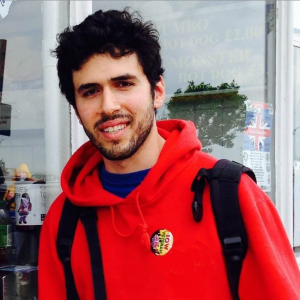Voyage 2050 Viewpoint: Dr Ali Sulaiman
In this series from the EPEC Future Research Working Group, Eleni Maria Ravanis talked with three early career planetary science researchers who are lead authors on Voyage 2050 white papers to find out more about how they got involved and what they think planetary science will look like in 2050.

Dr Ali Sulaiman is a post-doc at the University of Iowa in the USA. Originally from Lebanon, he completed his studies at Imperial College London in 2016, before staying on as a post-doc and subsequently moving to the US. He is the lead author of the white paper “Enceladus and Titan: Emerging Worlds of the Solar System.”
What is the basic idea of your white paper?
The white paper I led outlines some unresolved science questions relating to Titan and Enceladus, and identifies the relevant scientific themes we recommend ESA cover during the Voyage 2050 planning cycle. We argue that addressing these questions are a logical follow-on to Cassini-Huygens and will make major advancements to the present knowledge we have about the Solar System, its formation, evolution and likelihood that other habitable environments exist outside the Earth’s biosphere.
How did you become involved in the white paper?
I came across an announcement by ESA back in March 2019, inviting the community to respond to their call for white papers for Voyage 2050. As a scientist who had worked on Cassini, the idea of Titan and Enceladus came naturally to me since these two planetary bodies had some of the biggest surprises of the mission. With those surprises came even bigger questions that Cassini was not able to answer. I got together with a small team of international scientists to exchange some big ideas, and when we established a clear vision of the white paper we wanted, we reached out to the wider community and got more experts on board to cover all the areas we wanted.
What advice do you have for early career researchers who want to get involved in the follow-up of the white papers presented at this workshop?
“Reach out to people, get out of your comfort zone, and don’t be afraid to share your ideas and visions.”
Dr Ali Sulaiman
The best advice I can give is the one I was fortunate enough to receive from my mentors: Reach out to people, get out of your comfort zone, and don’t be afraid to share your ideas and visions. It can be intimidating for an early-career scientist to take on board a new project, particularly if they choose to lead a team that has senior scientists and/or scientists who have expertise totally different from theirs. But once you overcome the mental barrier of reaching out, you’ll realise that most people share the same enthusiasm as you do – in advancing science and making progress in the community through enabling new missions. And as long as you have ideas to offer, the community will learn from you as much as you will learn from them. Each person brings to the table a unique set of expertise and background, however junior or senior they are.
What do you think planetary science will look like in 2050?
“Part of what keeps planetary science alive are early-career scientists taking the initiative to lead or participate in white papers and decadal surveys, and I therefore strongly encourage all of my peers to consider taking up such roles.”
Dr Ali Sulaiman
I think the planetary science community will continue to grow into the future, especially in light of a growing appetite for lunar and planetary exploration in Asia and the Middle East (e.g. India’s Chandrayaan’s program and UAE’s Hope Mars Mission). These endeavours, as well as continued planetary programs by NASA and ESA, will demand a new generation of planetary scientists. It is therefore crucial that aspiring scientists from all backgrounds have access to educational resources and good mentorship, and early-career scientists are supported, guided, and made aware of funding opportunities to expand their research. Part of what keeps planetary science alive are early-career scientists taking the initiative to lead or participate in white papers and decadal surveys, and I therefore strongly encourage all of my peers to consider taking up such roles.
Historically, scientists have worked solely with space agencies to perform experiments in space and on planets. Do you think that the growth of private companies bringing payloads to space, e.g., to or around the Moon, is serious and mature enough for scientists to start collaborating with them?
Private companies are already making their mark in the space industry, and are filling in programs that agencies have terminated (e.g. human spaceflight). Keeping costs down is a priority in space missions, and the entry of more private companies into the competitive space industry will move towards lowering the cost of vehicles/payload. For that reason alone, I think scientific collaboration with private companies is inevitable.
More about Voyage 2050 Viewpoints.

